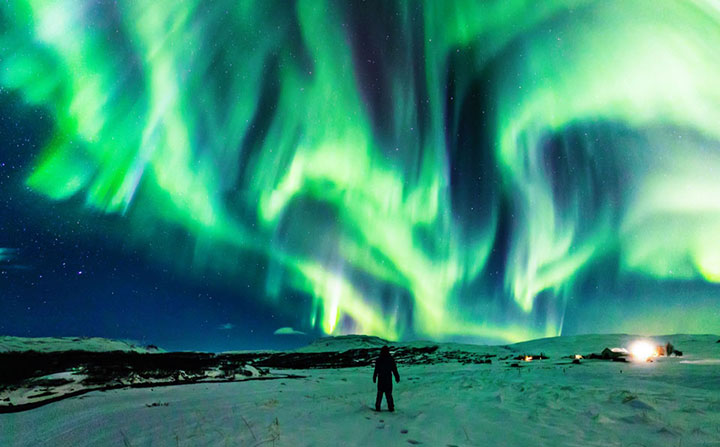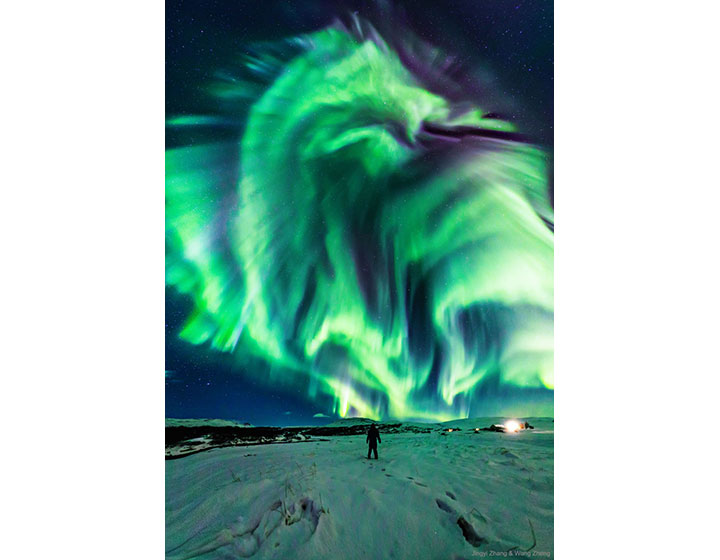A stunning display of a dragon-shaped aurora danced over Iceland earlier this month, “enthralling” skygazers and photographers alike.

Photographers Jingyi Zhang and Wang Zheng captured the remarkable green and purple display lighting up the night sky. The stunning image was featured in NASA’s “Astronomy Picture of the Day” on Feb. 18.
“This iconic display was so enthralling that the photographer’s mother ran out to see it and was captured in the foreground,” the space agency explained.
The photo shows the display dancing over a snow-packed ground with mountains marking the horizon while Zhang’s mother gazes upwards.
NASA explained the lightshow was caused by “a hole in the Sun’s corona that expelled charged particles into a solar wind that followed a changing interplanetary magnetic field to Earth’s magnetosphere.”
In layperson’s speak: Wow.

Get breaking National news
“As some of those particles then struck Earth’s atmosphere, the excited atoms subsequently emitted light: aurora,” the agency said.

Speaking with Live Science, Zhang said the dragon wasn’t the only mythical beast to appear in the light display.
“Interestingly, my partner photographed a phoenix at the same time,” Zhang said.
As Iceland’s tourism office notes, auroras are visible in the country during the fall-winter months, from about late August to April.









Comments